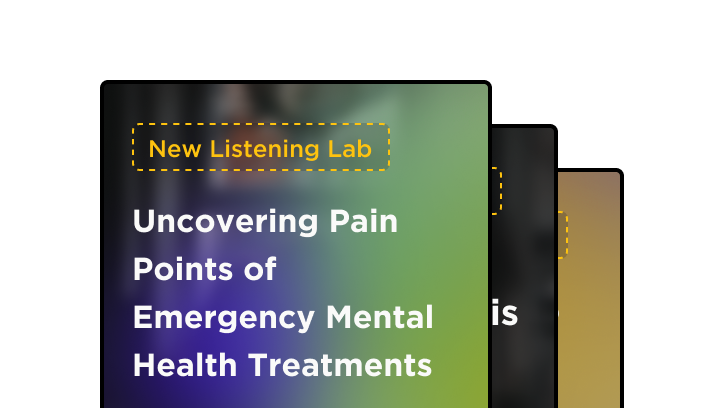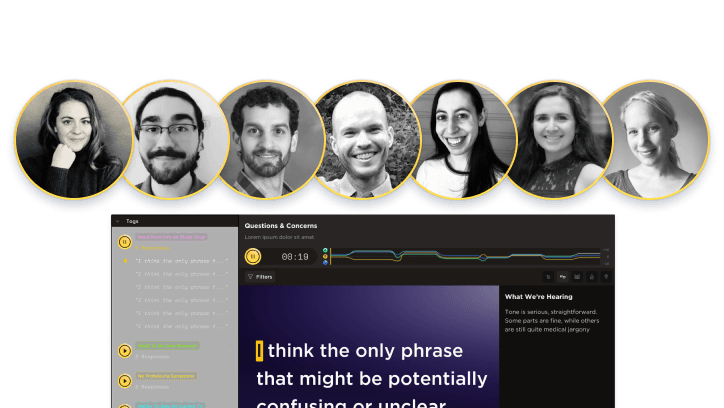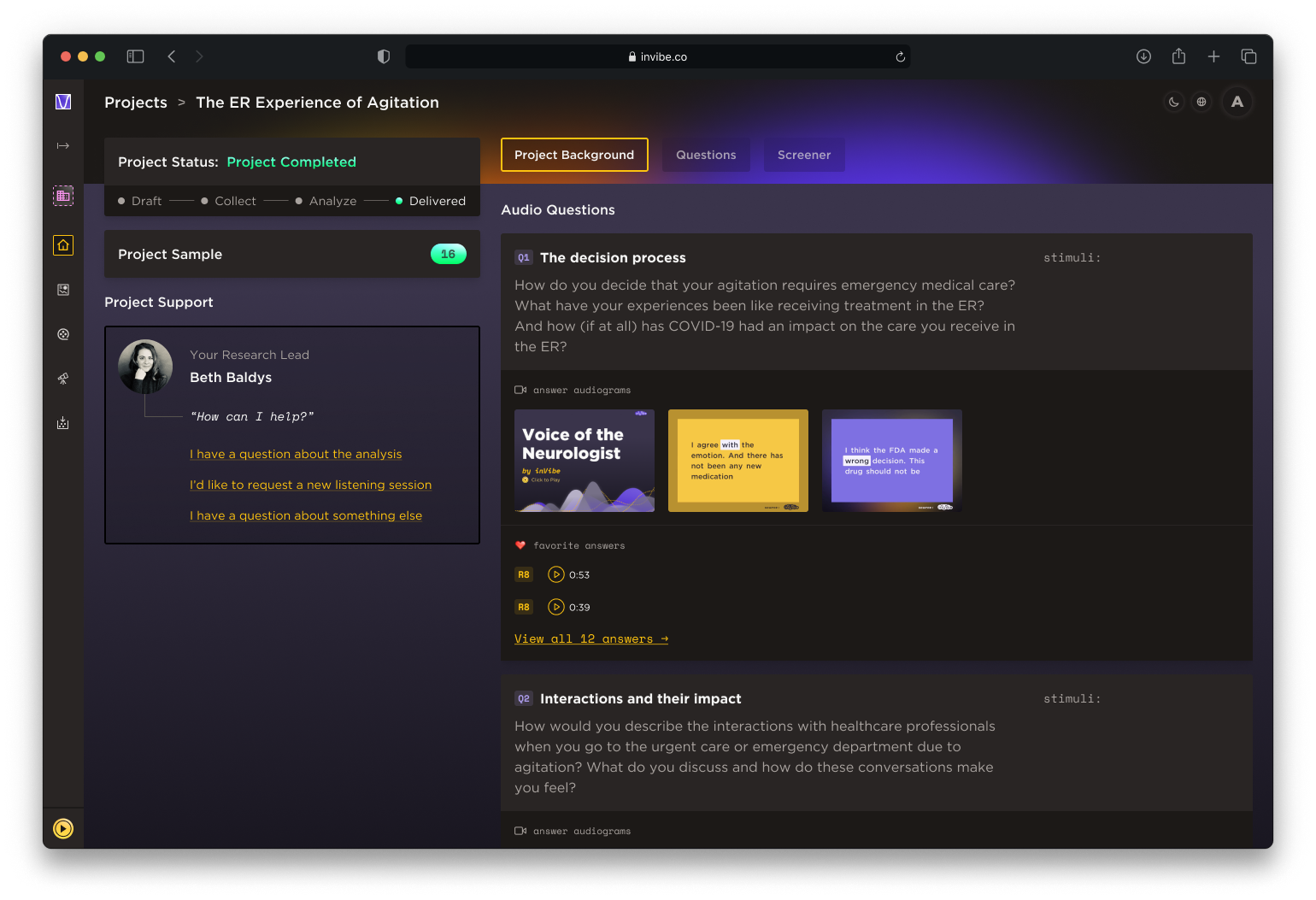Use Case
Market Trends
Case Study
Uncovering Pain Points of Emergency Mental Health Treatments
Client Goal
In advance of a new product launch in the mental health space, our client wished to better understand patient perspectives on current agitation treatment and how to align their product’s story with patients’ needs.
Objective 1
Explore patient accounts of the symptoms and history of agitation associated with their mental health condition.
Objective 2
Gather patient accounts of their experiences at the emergency room (ER) and any instances of friction or miscommunication with physicians.
Objective 3
Uncover patient attitudes towards treatment, as well as what aspects of the treatment they prioritize.
The inVibe Solution
inVibe’s Market Trends solution allowed our pharmaceutical client to quickly and efficiently deploy a mixed methods (quant + voice) research study to understand patients’ struggles with agitation (associated with specific mental health conditions) and uncover where the client could best offer a potential solution.
1. Collect
Within a few days, inVibe screened and recruited 30 patients with relevant mental health conditions to complete a mixed methods study. All patients initially completed a brief quantitiative survey; immediately followed by a subset who participated in an automated phone interview, responding to questions simply by speaking.
Key Questions
Q1
How do you decide that your agitation requires emergency medical care? What have your experiences been like receiving treatment in the ER? And how (if at all) has COVID-19 had an impact on the care you receive in the ER?
Q2
How would you describe the interactions with healthcare professionals when you go to the urgent care or emergency department due to agitation? What do you discuss and how do these conversations make you feel?
Q3
What, if anything, do you think people don’t understand about what it is like to experience agitation? In other words, what misconceptions do people have? And how does that impact you? What do you wish people knew or understood?
2. Analyze
inVibe’s analysts leveraged their language expertise and advanced NLP tools to process, evaluate and analyze multiple aspects of each response, including content, language, and emotion derived from speech-emotion recognition, allowing for deeper insights, faster.
What is Said
Summarize and categorize the content and themes.
How it’s Said
Identify the language patterns and construction.
How it Sounds
Utilize machine learning and acoustic technology to assess the emotionality.
3. Deliver
The client was provided with an interactive report via an online dashboard, along with the voice data, transcripts, and a high-level analysis. An in-house analyst walked the client through the most meaningful data, supporting each insight with specific voice data.
Audiogram
Videos
Clients have access to drag & drop tools to instantaneously create kinetic text animations from transcripts for internal sharing.

Listening
Labs
inVibe delivers self-guided interactive stories assembled from transcripts, audio, and charts – annotated with high-level expert observations.

Expert
Perspective
inVibe’s team of in-house analysts and language experts walk clients through the insights and recommendations derived from the research.


Key Insights & Recommendations
Based on the insights, inVibe recommended that the team take strategic actions:
#1
Counter the potential for trivialization of agitation by acknowledging in messaging that patients should not have to bear the responsibility for their own treatment.
#2
Help patients and HCPs improve their ER interactions by providing educational materials on appropriate treatment options and calming strategies.
#3
Message transparently about product safety and drug-drug interactions, as patients indicate a willingness to try a new treatment as long as they feel it’s safe.
Where are they now?
Our client used the research to inform their unbranded disease education efforts, particularly in addressing physician-patient empathy gaps at the point of care.
Ready to learn more?
/voice
/resources
/use-cases
- New Data Intelligence
- TrialPulse — Evaluation of Clinical Trial Recruitment Assets
- Concept / Message Testing
- Customer Journey Inflection Points
- Agency Pitch for New Business
- TrialPulse — DCT Design and Informed Consent
- Language of Disease
- Customer Stories
- Decision Drivers
- Market Trends
- TrialPulse — Disease Burden and Endpoint Selection
- HCP – Patient Communication
2025 inVibe - All Rights Reserved
